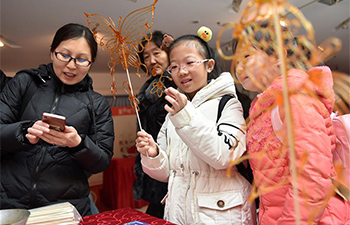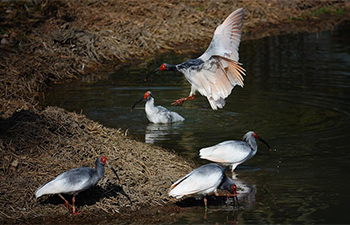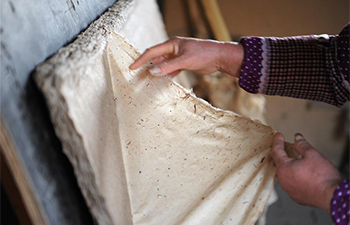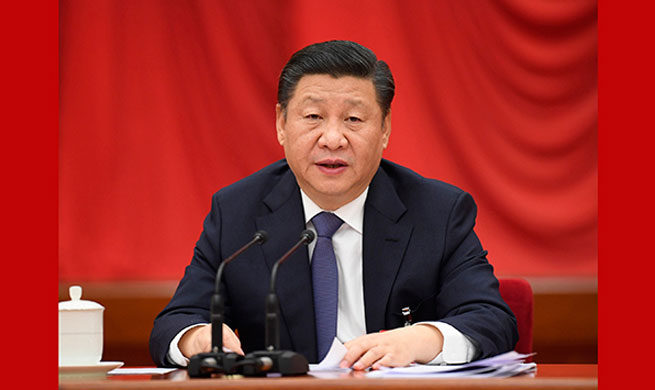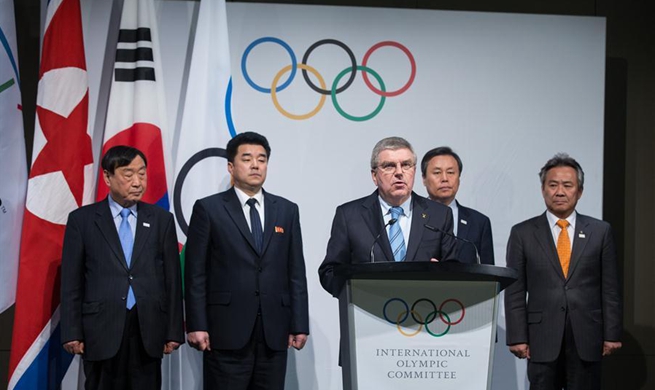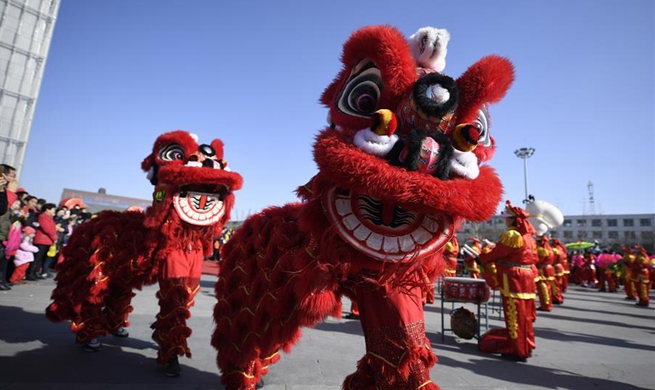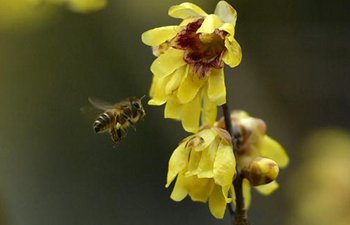BEIJING, Jan. 21 (Xinhua) -- Since the establishment of the Taikonaut Corps of the People's Liberation Army in 1998, Chinese taikonauts have completed six manned spaceflights, conducted over 100 scientific experiments and orbited the earth for 68 days and nights.
The corps recruited its first batch of 14 taikonauts from the elite pilots of the PLA Air Force in 1998. In 2010, seven more former pilots joined the mission.
The following are the details of each manned spaceflight:
SHENZHOU-5
China launched its first manned space mission in 2003, becoming the third country in the world to independently develop manned spaceflight, after Russia and the United States.
Yang Liwei became well-known as China's first taikonaut in space after orbiting the earth 14 times and traveling some 600,000 kilometers in space in 21 hours, a record for the world's most populous nation.
SHENZHOU-6
Two years later, a second manned spaceflight in 2005 put two other taikonauts Fei Junlong and Nie Haisheng on a five-day journey in space.
The mission aimed to master technology relating to a "multi-person and multi-day" orbital flight, as well as to carry out manned space-related scientific experiments and medical experiments.
SHENZHOU-7
In 2008, China had its first spacewalker. Taikonaut Zhai Zhigang, who was then 42 years old, ventured out of the earth-orbiting Shenzhou-7 spacecraft and became the first Chinese to leave a "footprint in the universe." China thus became the third country in the world capable of spacewalks.
Two other taikonauts Liu Boming and Jing Haipeng were also onboard the Shenzhou-7 spacecraft.
SHENZHOU-9
During the 13-day journey through space, three taikonauts Jing Haipeng, Liu Wang and Liu Yang, aboard the Shenzhou-9 spacecraft, completed China's first manned space docking with the country's first space lab Tiangong-1.
Liu Yang became China's first woman in space.
It also marked the beginning of a new journey for China as it inched closer to its goal of building a permanent space station by around 2020.
SHENZHOU-10
Shenzhou-10 was China's first application-oriented spaceflight. In its 15-day journey in space, Shenzhou-10 docked with the orbiting space lab Tiangong-1 twice, once through automatic operation and once manually.
Three taikonauts Nie Haisheng, Zhang Xiaoguang and Wang Yaping spent 12 days in Tiangong-1, where they conducted medical experiments and technical tests.
Female taikonaut Wang Yaping delivered China's first space lecture to students on Earth, about basic physics principles.
SHENZHOU-11
In the most recent Shenzhou-11 manned space mission in 2016, China achieved its first mid-term in-orbit stay by putting two taikonauts, Jing Haipeng and Chen Dong, in the space lab Tiangong-2 for 30 days, the longest-ever space mission in the country.
The two taikonauts spent a total of 33 days in space.
With the establishment of its own space station, which is expected around 2020, China will carry out manned space missions on a regular basis, and engineers and even tourists will then hopefully go to space.





